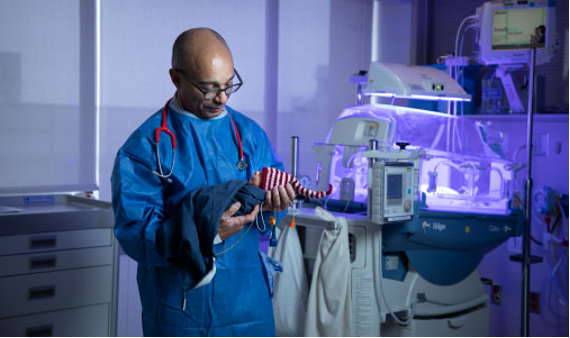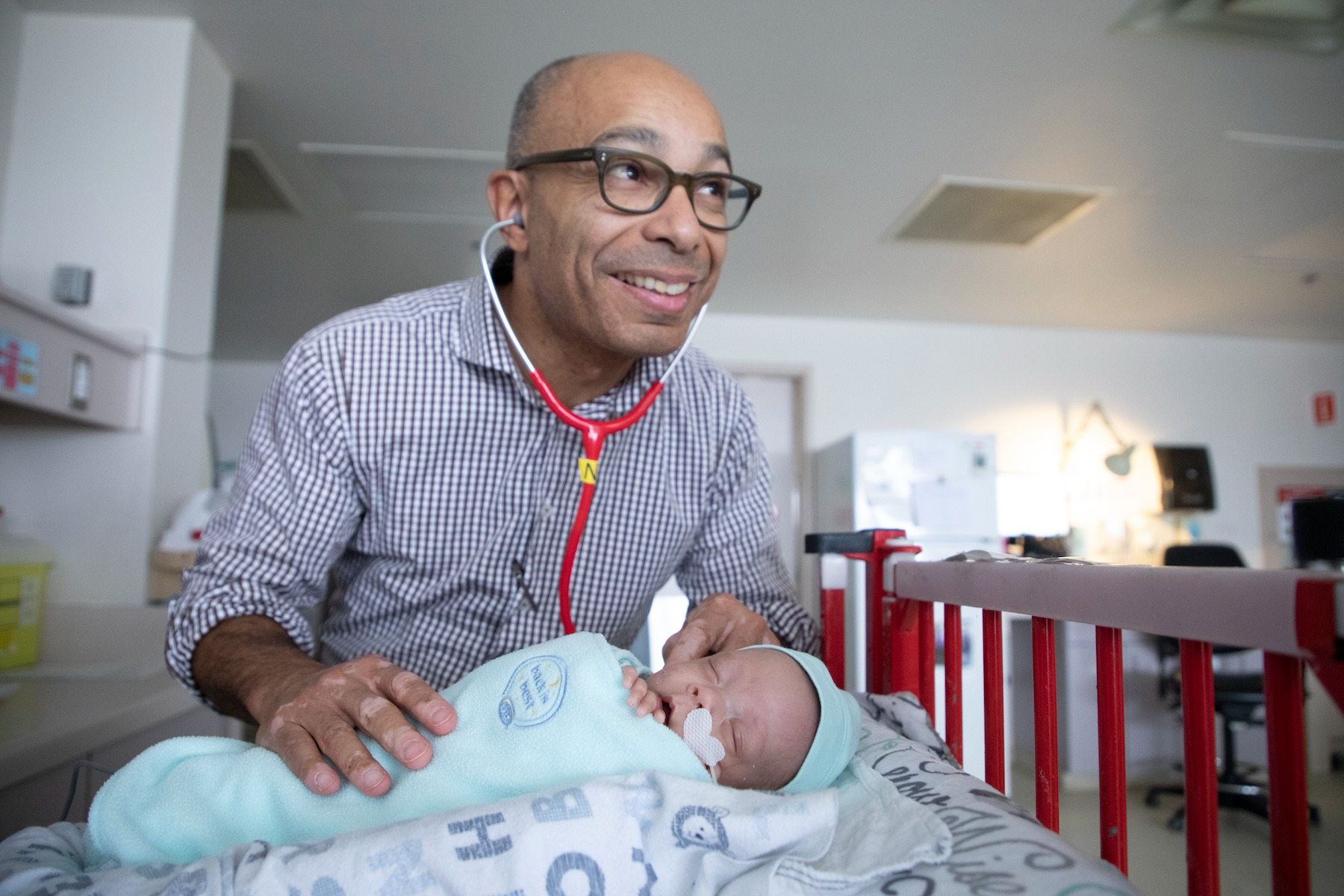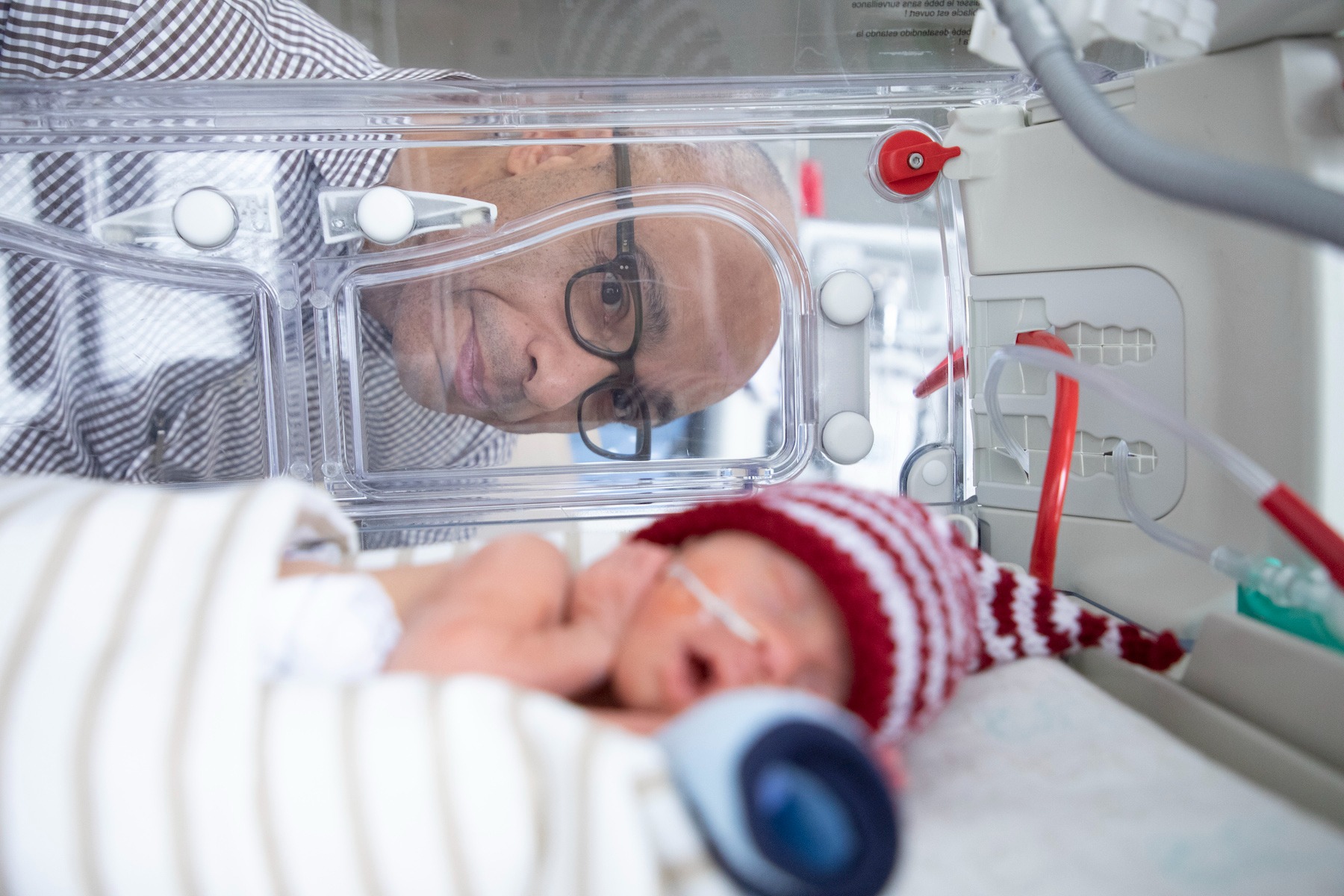I wrote this story for JOUR 4303: Health and Science Reporting at Carleton. The assignment was to craft a feature on a relevant, untold health issue.
By Emma O'Toole and Carolina Di Giulio
Five months, three weeks and four days.
That’s how long Liam and Olivia Eberts had to develop their tiny lungs before taking their first breaths.
At 20 weeks pregnant – 18 weeks before expected – the twins’ mother, Jamie-Lee Eberts, was rushed to the hospital. She was in premature labour. After two weeks of delaying the birth, Liam and Olivia were born.
Born nearly three months before their due date, the babies missed out on time critical to their growth; as with most extremely preterm babies, their lungs were severely underdeveloped. Liam and Olivia required help from mechanical breathing equipment, such as a ventilator or CPAP machine, to receive oxygen.
Albeit necessary for survival, the breathing equipment is invasive and poses a high risk of damaging babies’ lungs. This can develop into bronchopulmonary dysplasia, or BPD, a chronic lung condition that is the leading cause of death for premature babies.
Tragically, Liam passed away at three weeks old from the effects of BPD as a result of his extremely premature birth.
Olivia spent the first nine months of her life in the Ottawa Hospital’s neonatal intensive care unit. She had oxygen tubes in her nose until just after her first birthday.
Today, Olivia is a happy, healthy five-year-old girl. She attends swimming lessons and ballet classes. BPD has left her with mental and physical disabilities, but Eberts says Olivia’s strength and determination has shown her family that it’s important to “never give up.”
BPD develops when a newborn baby – often extremely premature, born 28 weeks or earlier – requires oxygen therapy or a ventilator to breathe. This stretches the lungs’ air sacs, causing inflammation and damage to the lining of the airways and the blood vessels surrounding them. More than 10,000 babies are diagnosed with BPD every year.
Bronchopulmonary dysplasia (BPD)

The incurable lung disease inhibits the flow of oxygen to other parts of patients’ bodies – in turn, it harms the brain, stunts growth and can lead to disabilities such as blindness or cerebral palsy.
There is no cure. But a group of scientists at the Ottawa Hospital are using stem cells to bring hope to families affected by the disease.
“We think this is a potential game-changing therapy,” said Dr. Bernard Thébaud, neonatologist and senior scientist spearheading the Ottawa Hospital’s clinical trials.
The treatment uses stem cells to prevent and heal lung damage caused by the mechanical breathing devices.
Along with these devices, doctors may also practice non-invasive measures such as administering a pulmonary surfactant. The medication, Dr. Thébaud says, overcomes the babies’ “biochemical immaturity, but the structural immaturity of the lung is still there.”
To Dr. Thébaud, the options for treating a preterm newborn place the health of the babies on a tricky pendulum.
“Those babies are between a rock and a hard place because in order to survive, we need to give them additional oxygen and pressure to get the oxygen into the lungs,” said Dr. Thébaud.
“But on the other hand, this damages their lungs because it’s not the physiological way of breathing. … [With stem cell therapy], we’re trying to prevent the injury and also promote lung growth. Currently, there’s no therapy out there that does that,” said Dr. Thébaud.
“In the lab, we have tested this approach. And we show that indeed, it does prevent injury; it does attenuate or decrease inflammation; it does promote lung growth."
Dr. Thébaud and his research team at the Ottawa Hospital Research Institute have spent the last decade pioneering cell-based therapies to lessen the effects of BPD and to help babies like Olivia.
The scientists discovered that umbilical cord stem cells were able to not only prevent but also repair lung damage caused by BPD in animal test subjects. These stem cells, called mesenchymal stromal cells, or MSCs, act like small pharmacies: they diagnose the problem then dispense the appropriate healing properties, promoting the recovery of injured tissues.
Dr. Thébaud and his team conducted the experiments on newborn rats, whose lung development closely mirrors babies’ born at 24 weeks.
By exposing the rats’ lungs to high levels of oxygen, Dr. Thébaud explained, the scientists were able to mimic the disease and recreate the structural abnormalities seen in preterm babies.
Two weeks after being on oxygen, the rats showed promising results.
“When we look under the microscope, we can see that the structure of the lung is much better in the rats that have received the treatment than those that have not,” said Dr. Thébaud.
“We can also measure the amount of inflammation that is in the lung… With the cells, this inflammation goes down.”
As of October 17, Dr. Thébaud and his team began the first phase of their clinical trial, testing the safety and feasibility of cord-derived stem cell treatment in preterm babies.
A shining hope for preterm babies
Life with BPD

Eberts says that for Olivia, stem cell-based treatment could have given Olivia the opportunity to fully grow as a child.
“Because her body was so busy healing internally, it put her developmentally behind,” said Eberts.
“Hitting her milestones has taken a lot longer and [required] a lot more therapies than it would have had she had been strong enough to enter life and hit milestones with regular timing, as every other child typically does.”
Eberts says she wonders how her son Liam’s life could have been affected by stem cell treatment.
“There’s a theory that possibly Liam, with that support, could have survived,” said Eberts.
“That possibility that he could be here with us today certainly has impacted all of us. And it's a ripple effect, family and friends who grieved the loss of Liam.”
For most people with BPD, the effects never go away. Dr. Thébaud says he is regularly contacted by a 40-year-old man who was a preterm baby that still suffers from prolonged side effects of disease.
“He regularly emails me and asks me where I am in my stem cell research,” said Dr. Thébaud.
“He calls me by my initials now: ‘Hey, BT.’ And it’s very interesting, because sometimes he attracts my attention to papers that were published that I hadn’t heard of yet.”
The man, like Dr. Thébaud, is eager to find a cure.
Dr. Thébaud listed him and Olivia as inspirations for his stem cell research.
Following the thread: From research to trials to the clinic
The researchers welcomed the first baby to their trial last week, though Dr. Thébaud says finding more families to participate are important next steps. But not all parents of premature babies are jumping at the opportunity.

“I think parents might find it challenging to accept something that is very unknown,” said Brigette Lemyre, neonatologist with the Ottawa Hospital Research Institute and fellow researcher with Dr. Thébaud.
Eberts agrees, adding that she empathizes with parents of newborn preterm babies.
“Although I do hope that there will be lots of parents willing to participate, it is quite scary when your child is born premature and all that goes with that,” said Eberts.
“Listening and agreeing to participate in a trial can be challenging, especially since you see them so fragile.”
Eberts says had she been given the opportunity, she would have enrolled Olivia in the trial when she was born in 2017. She says she hopes the treatment will be available to premature babies soon, recalling a moment with her husband when Olivia endured an apnea spell.
“I remember sitting in the hospital with him and, he said, ‘I just can’t lose another child,’” said Eberts.
“That’s something I don’t want any more parents to have to experience.”
Dr. Thébaud is eager to get the treatment approved, too.
“Every baby I see now that’s not benefiting from something that we are working on in the lab is a reminder that we need to do the work faster and more efficiently,” said Dr. Thébaud.
But no matter how quick his team is, these things take time: Dr. Thébaud said “bringing discoveries from the lab into the clinic” is a long process, and they’re only at the beginning.

Post a comment